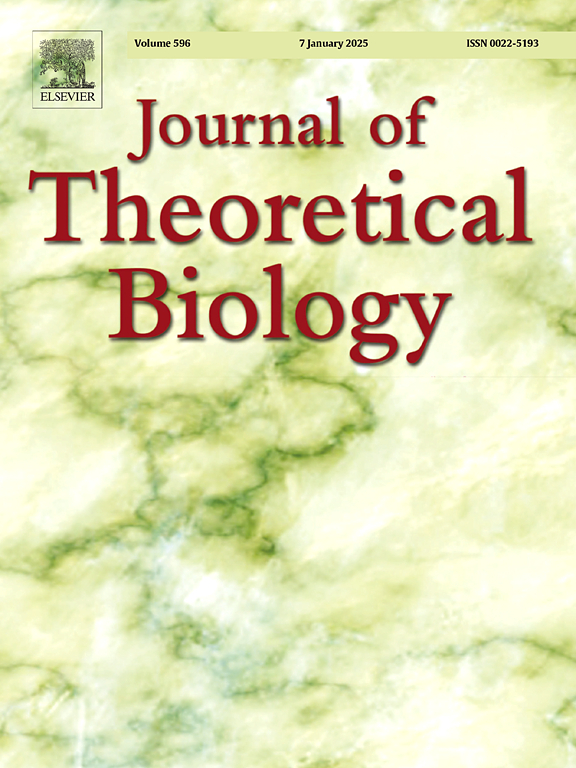环境变化导致的突变和生物多样性损失的有效解耦。
IF 2
4区 数学
Q2 BIOLOGY
引用次数: 0
摘要
许多生物种群在特定环境中表现出生存和繁殖策略的多样性,微生物就是一个例子。我们通过考虑大量无性生物种群的数学模型,探讨了在持续环境变化下不同策略的命运。适应度是数量性状的双峰函数,有两个局部最优,由一个局部最小值隔开,即稳定选择和破坏性选择的混合。最优值代表两个局部“最佳”性状值。我们考虑在环境不变的情况下,性状的平衡分布是双峰的。性状的这种分布通常需要两个峰之间的突变耦合才能存在。双峰性状分布表明两个共存的无性系具有不同的生存和繁殖策略。当受到持续环境变化的影响时,种群通过利用突变来适应环境的变化。环境变化的速度越快,所利用的突变的影响就越大。在持续的环境变化下,性状值的分布呈现出两种不同的形式。在低变化率下,分布仍然是双峰的。在较高的速率下,分布变成单峰。这种克隆/生物多样性的丧失是由一种新机制驱动的,即环境变化使一类突变解耦。本文章由计算机程序翻译,如有差异,请以英文原文为准。
Effective decoupling of mutations and the resulting loss of biodiversity caused by environmental change
Many biological populations exhibit diversity in their strategy for survival and reproduction in a given environment, and microbes are an example. We explore the fate of different strategies under sustained environmental change by considering a mathematical model for a large population of asexual organisms. Fitness is a bimodal function of a quantitative trait, with two local optima, separated by a local minimum, i.e., a mixture of stabilising and disruptive selection. The optima represent two locally ‘best’ trait values. We consider regimes where, when the environment is unchanging, the equilibrium distribution of the trait is bimodal. A bimodal trait distribution generally requires, for its existence, mutational coupling between the two peaks, and it indicates two coexisting clones with distinct survival and reproduction strategies. When subject to persistent environmental change, the population adapts by utilising mutations that allow it to track the changing environment. The faster the rate of change of the environment, the larger the effect of the mutations that are utilised. Under persistent environmental change, the distribution of trait values takes two different forms. At low rates of change, the distribution remains bimodal. At higher rates, the distribution becomes unimodal. This loss of a clone/biodiversity is driven by a novel mechanism where environmental change decouples a class of mutations.
求助全文
通过发布文献求助,成功后即可免费获取论文全文。
去求助
来源期刊
CiteScore
4.20
自引率
5.00%
发文量
218
审稿时长
51 days
期刊介绍:
The Journal of Theoretical Biology is the leading forum for theoretical perspectives that give insight into biological processes. It covers a very wide range of topics and is of interest to biologists in many areas of research, including:
• Brain and Neuroscience
• Cancer Growth and Treatment
• Cell Biology
• Developmental Biology
• Ecology
• Evolution
• Immunology,
• Infectious and non-infectious Diseases,
• Mathematical, Computational, Biophysical and Statistical Modeling
• Microbiology, Molecular Biology, and Biochemistry
• Networks and Complex Systems
• Physiology
• Pharmacodynamics
• Animal Behavior and Game Theory
Acceptable papers are those that bear significant importance on the biology per se being presented, and not on the mathematical analysis. Papers that include some data or experimental material bearing on theory will be considered, including those that contain comparative study, statistical data analysis, mathematical proof, computer simulations, experiments, field observations, or even philosophical arguments, which are all methods to support or reject theoretical ideas. However, there should be a concerted effort to make papers intelligible to biologists in the chosen field.

 求助内容:
求助内容: 应助结果提醒方式:
应助结果提醒方式:


